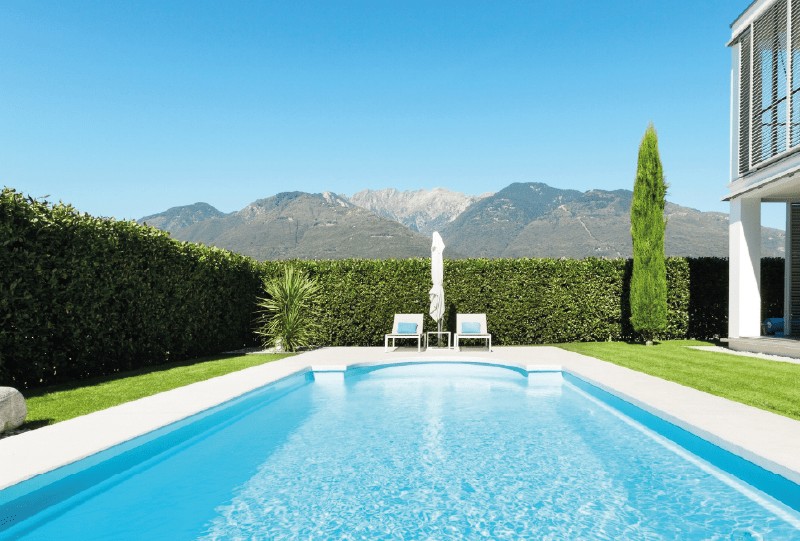Essential keys for pool maintenance
Keeping a pool in perfect condition requires proper water balance and constant cleaning. From pH regulation to algae and fungus prevention, every detail influences water quality. In this article, we offer you essential keys to ensure a clean, safe and ready-to-enjoy pool.

Keeping a pool in top condition requires attention to several key factors. Below are the key aspects to ensure that the water is always ready for a refreshing swim:
1. pH regulation
The pH of water measures its level of acidity or alkalinity on a scale of 0 to 14. To ensure a safe and comfortable environment, the pH should be between 7 and 7.8. Values outside this range can cause skin and eye irritation, as well as reduce the effectiveness of disinfectants. It is essential to perform periodic water tests and adjust the pH as necessary, using specific products to increase or decrease it.
2. Proper chlorination
Chlorine is the most common disinfectant in pool maintenance, as it eliminates bacteria and other microorganisms. There are two main methods of chlorination:
- Shock treatment: Applied at the beginning of the season or when the water shows signs of contamination. It consists of adding a high dose of chlorine for deep disinfection.
- Continuous treatment: Involves the regular addition of chlorine in moderate doses to maintain constant levels of disinfection.
It is crucial to maintain the pH in the proper range during chlorination, since an unbalanced pH can decrease the effectiveness of chlorine and cause discomfort to bathers.
3. Prevention and control of algae
Algae can proliferate rapidly, giving the water a greenish hue and slippery surfaces. To prevent their appearance, it is advisable to:
- Perform regular cleaning of the walls and bottom of the pool.
- Apply preventive algaecides according to the manufacturer's instructions.
- Ensure proper water circulation and filtration.
If algae are already present, shock treatment and thorough cleaning of the filter system may be necessary.
4. Use of flocculants
Tiny suspended particles can make the water appear cloudy. Flocculants help to group these particles together, making it easier to remove them by the filter system or manual vacuum. This process is especially useful when, despite proper filtration, the water does not reach the desired clarity.
5. Control of water hardness
A high mineral content, especially calcium, can cause the formation of limescale deposits on pool surfaces and filtration equipment. To avoid these problems:
- Regularly monitor water hardness.
- Use anti-limescale products to keep mineral levels under control.
- Ensure proper pH and total alkalinity balance.
6. Preventing Fungus
Wet areas around the pool, such as edges and transit areas, are prone to fungal growth, which can pose health risks. To prevent their appearance:
- Keep these areas clean and dry as much as possible.
- Apply specific fungicides to susceptible surfaces.
- Encourage the use of appropriate footwear in the areas surrounding the pool.
In addition to these precautions, it is advisable to follow a series of practices for general pool maintenance:
- Cover the pool: Use covers during periods of prolonged inactivity to prevent the accumulation of dirt and reduce evaporation.
- Don't drain your pool in winter: Keeping the water in the pool year-round helps preserve the structure and makes it easier to restart activities the following season.
- Equipment protection: Protect the pump and other filtration system components from extreme weather conditions to prolong their lifespan.
- Regular cleaning: Remove leaves, insects, and other debris from the water surface every few days to keep it in top condition.
- Constant monitoring: Test pH and chlorine levels daily or weekly, adjusting as needed to maintain the chemical balance of the water.
By following these tips and establishing a maintenance routine, you can enjoy a clean, safe, and inviting pool all season long.





Our customers trust us
Opinions of our clients
Receive our news